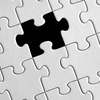Quantitative risk analysis (QRA) is a technique for quantifying the risk that a particular process or operation poses to an individual and population. QRA was developed in the 1970s for the aerospace, electronics, and nuclear power industries, and in the 1980s was refined for use in the chemical and petrochemical industries.
Following hazard identification, quantitative risk assessment with HAZOP, LOPA and complementary methods can be extended with explosion & dispersion modelling. Building upon our extensive experience in engineering simulation, we support a range of consequence analysis tools to predict the extent & severity of hazardous events to aid risk assessment.
How Does it Work?
We have project experience considering the consequences of potential fire and explosion events using industry standard tools such as the phenomenologically-based Phast, including determination of required SIL target levels. Our fluid dynamics team can also model discharge and gas dispersion effects in detail using CFD methods.
For companies looking to develop their own in-house capabilities, ANSYS CFD and our specialised ANSYS Autodyn solver are highly suited to the simulation of fire, explosion, blast and discharge/dispersion scenarios.





